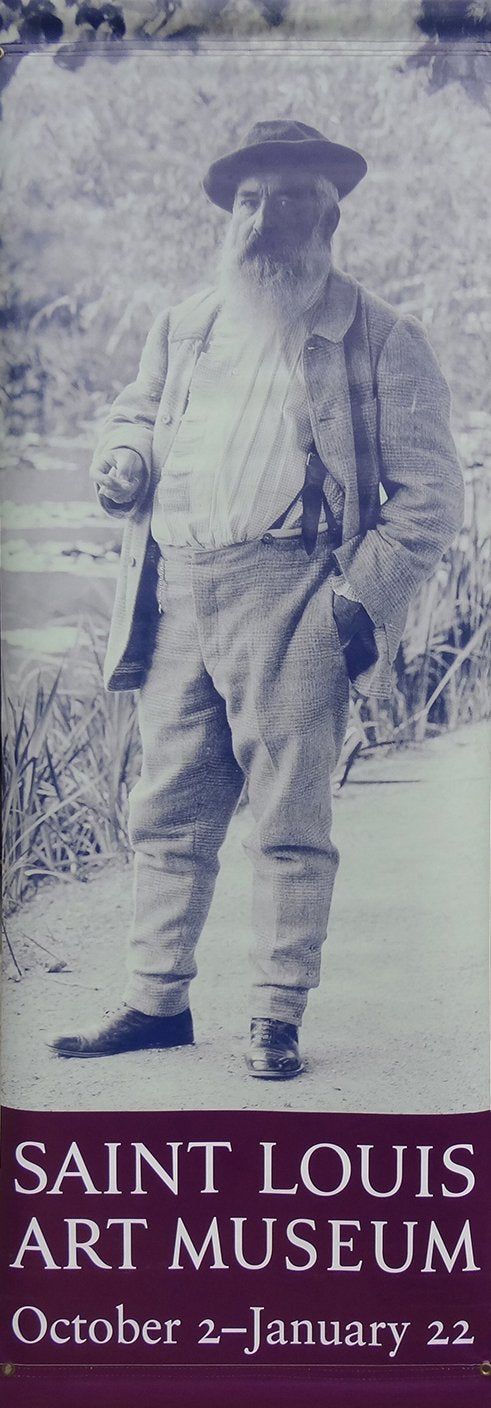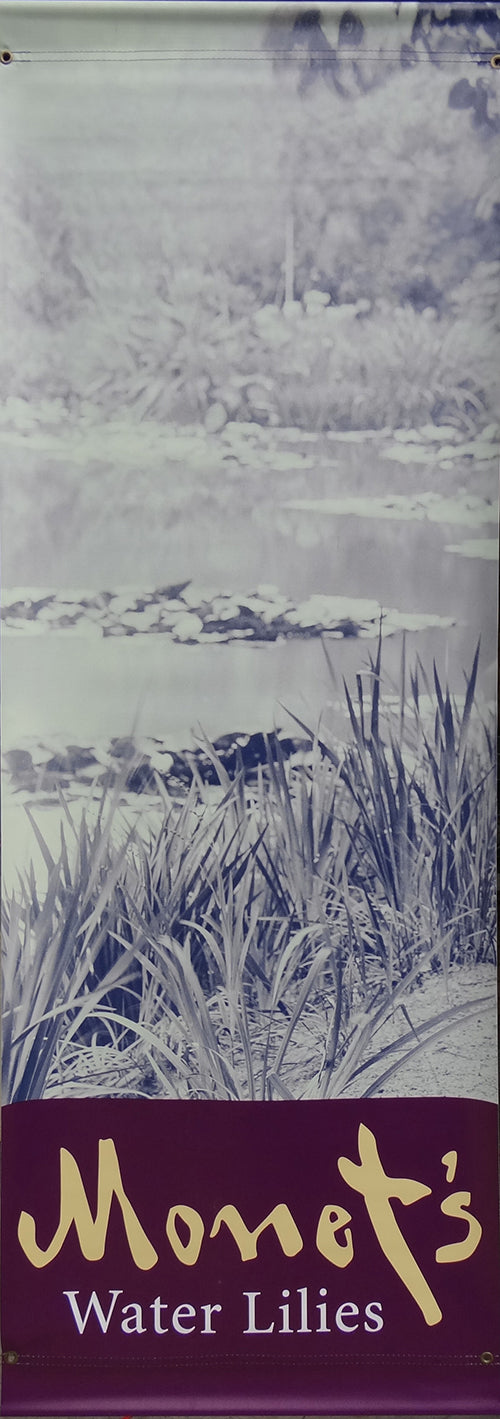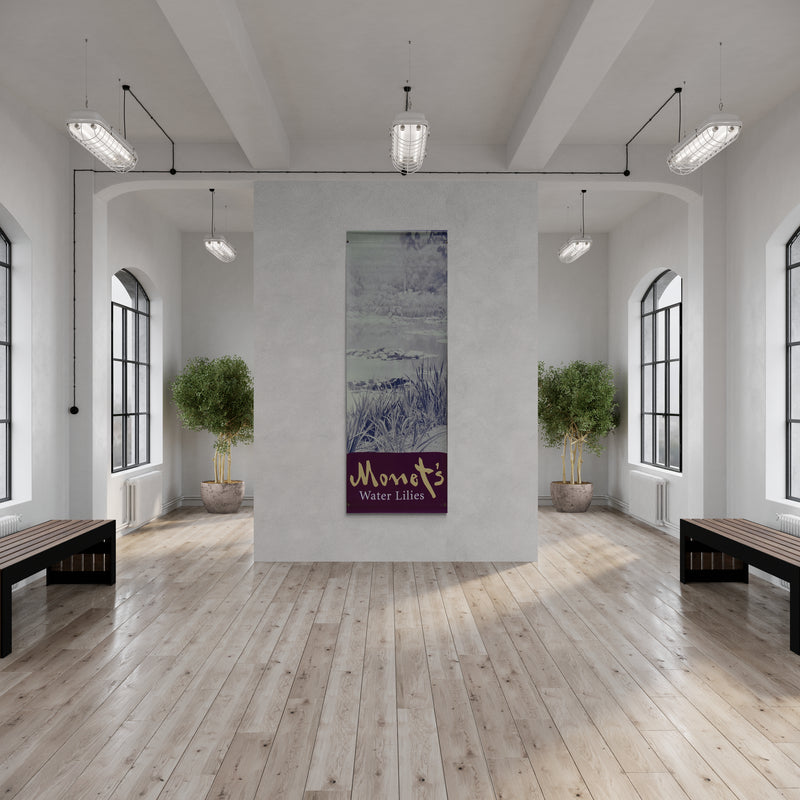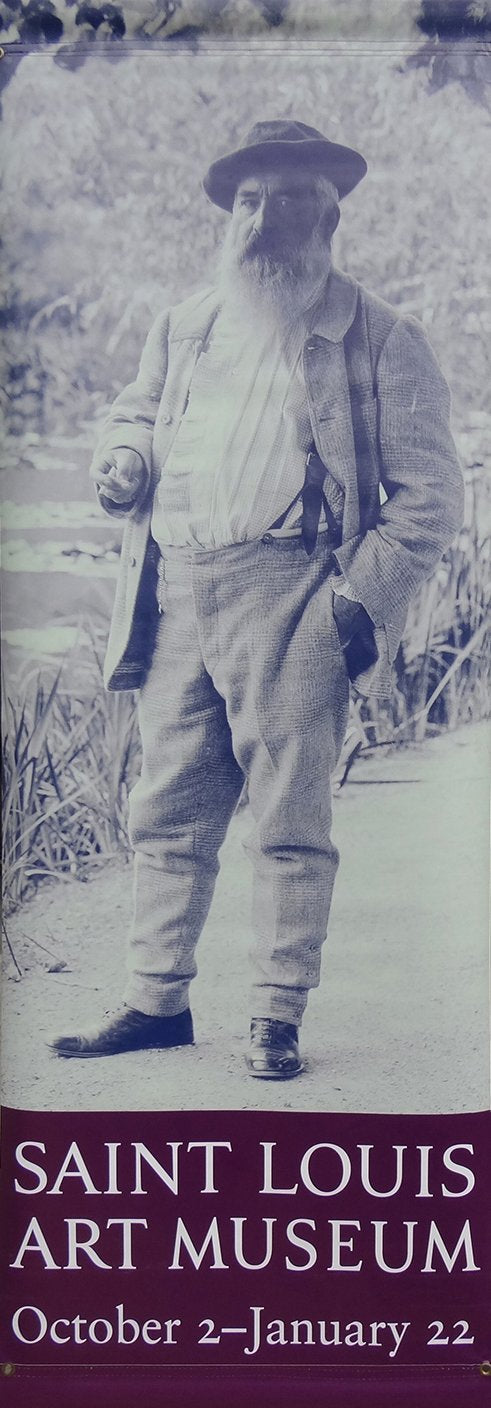Saint Louis Art Museum
Portrait of Monet
Portrait of Monet
Couldn't load pickup availability
Share
Limited Edition: 11
Exhibition: Monet’s Water Lilies
Material: Printed vinyl
Dimensions: 30" x 84" (76cm x 213cm)
Hanging Hardware Included
Summary
Claude Monet had a clear vision for his gardens at Giverny. With great pleasure, he designed flower groupings of different heights to create dense, season-long plantings of the simplest varieties mixed with the rarest specimens. In 1893, he launched a major landscaping project on nearby land to build the lily pond that became the subject of much of his work in later life. Monet had the support of the local government for the endeavor, but his peasant neighbors feared that his strange plants would poison the water. Alas, the pond was dug and filled by a brook off the Epte River, a tributary of the Seine River. Monet planted white water lilies native to France, as well as yellow, blue, and pink lilies imported from South America and Egypt. The banner used to promote the St. Louis Art Museum exhibition, Monet’s Water Lilies, shows Monet standing before the finished product.
Description
With his second wife, Alice Hoschede, Claude Monet moved to Giverny, 45 miles west of Paris, in 1883. First they rented House of the Cedar-Press (an apple press was nearby) and as Monet’s paintings gained footing in the art market, Monet purchased the small house. Over the years, Monet expanded the house to accommodate his large family and designed extensive gardens, a Japanese foot bridge, and lily ponds that became central motifs for his work.
The exhibition, Monet’s Water Lilies, featured only eight works of art: the Agapanthus triptych; two large, plein air preparatory studies of the left and right panels of the triptych; a diptych of the reflection on water of wisteria growing on Monet’s Japanese bridge; and a painting called Water Lilies. St. Louis Art Museum Curator, Simon Kelly, wished to allow for more focused attention on these few extraordinary canvases, rather than have visitors glancing quickly at many pieces. Over the course of 10 years and until his death, Monet repainted the large scale (14 by 7 feet each) Agapanthus triptych eight times. Curator Kelly studied paint cross sections, x-rays, and archival photographs of the paintings and was able to track Monet’s transition over the years from precise naturalism to a more diffuse flatness. Specifically, the lilies became more abstract. Students of Monet have long pondered whether this movement towards abstraction was intentional or the result of aging eyes and cataracts.
This banner was one of two different banner designs (sorry the other design is sold out!) that was used to promote Monet’s Water Lilies. Both sides show portions of a black and white photograph of Monet in front of his lily pond. The photo was made by Jacques-Earnest Bulloz and is entitled Claude Monet, Giverny, 1905. On one side, Monet is shown standing looking at the camera with the Japanese bridge over his left shoulder. At the bottom, “SAINT LOUIS ART MUSEUM/October 2-January 22” appears in white on a purple background. The left side of the original photo featuring the water lily pond fills the top portion of the other side of the banner with “Monet’s Water Lilies” on a purple background at the bottom. “Monet’s” is printed in the artist’s signature style in yellow; the other text is in white.
Provenance
This banner was displayed around the St. Louis area between October 2, 2011 and January 22, 2012. Monet’s Water Lilies debuted at the Nelson-Atkins Museum of Art in Kansas City, April 9 to August 7, 2011. The Agapanthus Triptych was exhibited at the Cleveland Museum of Art in 2015 as a build up to the museum’s centennial celebration in 2016.
About the Artist












